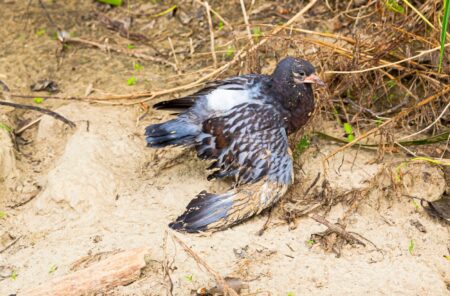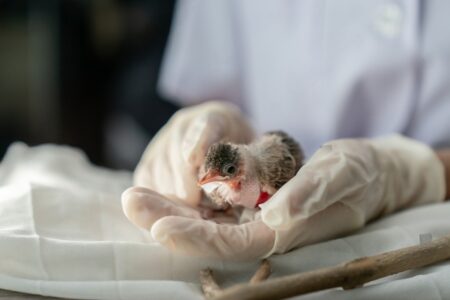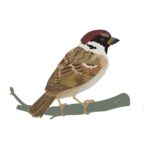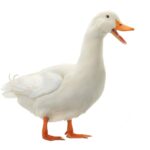What To Do With An Injured Bird: The Ultimate Guide
An injured bird is a common sight, especially in urban areas where they may have collided with buildings or been hit by a car. It can be heartbreaking to see a bird in distress, but there are steps you can take to help. Knowing what to do with an injured bird can make a big difference in its chances of survival.
First and foremost, it’s important to assess the situation and prioritize your safety as well. If the bird is in a dangerous location, such as on a busy road or near a predator, try to safely move it to a safer area. If the bird appears to be seriously injured, it’s best to contact a wildlife rehabilitator as soon as possible to provide proper care.
If you are able to handle the bird safely, you can try to capture it and transport it to a rehabilitation center. To do this, you can use a towel or blanket to gently scoop up the bird and place it in a box with air holes. Make sure to keep the box in a warm and quiet place until you can bring it to a professional.
If the bird has a minor injury and can still fly, it may just need a safe place to rest and recover. You can create a makeshift shelter by placing a cardboard box with air holes in a quiet and shaded area, away from predators. You can also leave out some water and seeds or fruit for the bird to eat.
However, it’s important to note that not all birds need to be rescued or brought to a rehabilitation center. Some may just be temporarily stunned or exhausted and will recover on their own. If you are unsure, observe the bird from a distance for a period of time to see if it shows signs of improving or if it is still in distress.
In general, it is best to always contact a local wildlife rehabilitation center or a licensed wildlife rehabilitator for guidance and assistance when dealing with an injured bird. They will have the proper training and resources to provide the best care for the bird and increase its chances of survival.
In conclusion, encountering an injured bird can be a distressing situation, but there are steps you can take to help. Assess the situation, prioritize your safety, and seek professional help when needed. With proper care and attention, an injured bird can have a chance to recover and return to its natural habitat.
What To Do With An Injured Bird: The Ultimate Guide
- Assess the situation: The first step in knowing what to do with an injured bird is to assess the situation. If the bird is severely injured or in danger, it may be best to contact a wildlife rehabilitator. If it is a minor injury, you may be able to handle it yourself.
- Approach with caution: Injured birds may be scared and may try to defend themselves, so it is important to approach them with caution. Wear gloves to protect yourself and slowly approach the bird from the side to avoid frightening it.
- Contain the bird: If the bird is able to move, it may try to fly away when you approach it. Use a towel or cloth to gently cover the bird and contain it. This will also help to protect the bird from further injury.
- Check for immediate danger: Before handling the bird, check for any immediate danger such as a predator or a busy road. If there is a predator nearby, try to scare it away before releasing the bird.
- Observe the bird’s behavior: While containing the bird, observe its behavior. If it is able to move its wings and legs and shows no signs of distress, it may be best to release it back into the wild.
- Provide a safe and warm environment: If the bird is too weak or injured to be released, it is important to provide it with a safe and warm environment. Place the bird in a well-ventilated box lined with soft towels and keep it in a quiet, warm room away from pets and drafts.
- Contact a wildlife rehabilitator: If the bird is severely injured, it is best to contact a wildlife rehabilitator for proper medical care. These professionals have the necessary training and expertise to treat injured birds and release them back into the wild once they have recovered.
- Provide food and water: If the bird will be in your care for more than a few hours, it is important to offer it food and water. You can provide a shallow dish of water and small pieces of fruits or seeds for the bird to eat.
- Do not attempt to care for the bird yourself: It is important to remember that wild birds are not domestic pets and require special care. Do not attempt to feed or administer medication to the bird yourself as this can do more harm than good. It is best to leave it to the professionals.
- Release the bird back into the wild: Once the bird has fully recovered, it is important to release it back into its natural habitat. This should be done in the same area from where it was found, as birds have specific territories and may have difficulty adjusting to a new location.
How to Tell If A Bird is Sick or Injured
- Physical Appearance: One of the most obvious signs of a sick or injured bird is a change in its physical appearance. Look for any changes in feathers, such as ruffled or fluffed feathers, or any missing patches or signs of injury. The bird may also appear weak, lethargic, or have difficulty standing or flying.
- Abnormal Behaviors: A sick or injured bird may exhibit abnormal behaviors, such as loss of balance, difficulty breathing, head tilting, or unusual posture. It may also have trouble using its beak, or have a change in its vocalizations.
- Change in Eating or Drinking Habits: Pay attention to the bird’s eating and drinking habits. A sick or injured bird may eat less, refuse food altogether, or have trouble swallowing. It may also drink more water than usual or show signs of dehydration.
- Discharge or Lumps: Check for any discharge from the eyes, nose, or mouth. A bird with a respiratory infection may have a runny nose or discharge around the eyes. Lumps or swellings on the bird’s body can also be a sign of a tumor or infection.
- Dirty Feathers or Droppings: Sick or injured birds may have dirty or soiled feathers around their vent area or have changes in their droppings. This could indicate a digestive issue or infection.
- Lack of Social Interaction: Birds are social creatures and should be interacting with their cage mates or humans regularly. If a bird suddenly becomes antisocial or isolated, it could be a sign of illness.
- Injury or Trauma: If you notice any physical injuries on the bird, such as broken wings or legs, wounds, or bleeding, it is important to seek immediate veterinary care.
- Weight Loss: A significant weight loss in a short period of time can be a sign of a serious health issue. Monitor the bird’s weight regularly by weighing it on a kitchen scale and track any changes.
If you notice any of these signs in a bird, it is important to take it to a certified avian veterinarian for a check-up. Early detection and treatment can often lead to a better outcome for the bird’s health.
SEE ALSO: How To Get A Bird Out of Your House: Step By Step Guide
Bird Won’t Move But is Alive
If the bird is not moving but is still alive, it could be injured or sick. You should try to provide a safe and comfortable environment for the bird and seek help from a veterinarian or a local bird rescue organization. Do not try to handle or force the bird to move as it may cause further harm.
How to Help A Bird That Can’t Fly
- Assess the Situation: The first step in helping a bird that can’t fly is to carefully assess the situation. Is the bird injured or sick? Is it a baby bird that has fallen out of its nest? Is it a domestic bird that has escaped from its cage? Understanding the cause of the bird’s inability to fly will help determine the best course of action.
- Keep the Bird Safe: If the bird is in a dangerous location, such as a busy sidewalk or near a busy road, move it to a safer area. This can be done by gently coaxing the bird onto a towel or in a box and transporting it to a safer location, or by using a broom or similar object to gently guide the bird to a safer spot.
- Provide Temporary Shelter: If the bird is injured or sick, it may need temporary shelter until it can be taken to a wildlife rehabilitation center or veterinarian. Place the bird in a quiet, dark area in a well-ventilated box or carrier with a soft towel or paper towel on the bottom. Make sure the box has holes for air to circulate.
- Contact a Wildlife Rehabilitation Center: If the bird is injured or sick, it is best to contact a local wildlife rehabilitation center for guidance.
What to Feed An Injured Bird
If you find an injured bird, it is important to seek professional help from a licensed wildlife rehabilitator as soon as possible. In the meantime, here are some guidelines on what to feed an injured bird:
- Water: The first thing to do when caring for an injured bird is to give it access to fresh, clean water. You can provide a shallow dish of water or a bird bath for the bird to drink from. Be sure to change the water daily to keep it clean and prevent bacteria growth.
- Insects: Many birds are insectivorous, meaning they primarily eat insects, so providing insects is a good option for feeding an injured bird. You can offer live insects such as crickets, mealworms, or waxworms, or freeze-dried versions of these insects.
- Seeds: Some birds, such as finches and sparrows, feed on a variety of seeds. If you have access to wild bird seed or millet, you can offer this to the injured bird. Make sure the seeds are fresh and not spoiled or moldy.
- Fruits and Berries: Many birds, such as robins and thrushes, eat fruits and berries as part of their diet. You can offer small pieces of fruits like apples, melons, or berries to the injured bird.
- Meat: Some birds, including birds of prey, eat meat as part of their diet. If you have access to fresh, unseasoned meat such as raw chicken or ground beef, you can offer small pieces to the injured bird. Do not offer cooked or processed meats, as these can be harmful to birds.
It is important to note that not all birds will eat the same foods, so it is best to consult with a wildlife rehabilitator or do some research on the specific type of bird you are caring for to ensure you are providing the appropriate diet.
How to Care for An Injured Bird at Home
- Assess the Injury: The first step in caring for an injured bird at home is to assess the injury. You want to determine the severity of the injury and decide whether the bird needs immediate medical attention. If the injury is minor, you may be able to care for the bird at home until it fully recovers. However, if the injury is severe, it’s best to contact a licensed wildlife rehabilitator to provide proper treatment.
- Handle the Bird with Care: When handling an injured bird, it’s important to do so with care. Use a towel or cloth to gently pick up the bird and avoid touching its wings or injured areas. Birds are delicate creatures, and handling them roughly can cause further harm.
- Provide a Safe and Comfortable Environment: Once you have the bird in your care, it’s important to provide a safe and comfortable environment for it to rest and recover. Place the bird in a quiet and warm space, away from any pets or young children. Use a box or a cage with proper ventilation and place a towel or paper towels on the bottom for the bird to rest on.
- Offer Food and Water: Injured birds may not have enough energy to find food and water on their own. Offer the bird some fresh water in a shallow dish and provide small pieces of fruit, seeds, or mealworms for it to eat. Do some research on the type of bird you have found to ensure you are providing the appropriate food for its species.
- Monitor the Bird’s Progress: Monitor the bird’s progress daily by observing its behavior and any changes in its condition. If the bird shows signs of improvement, continue to provide care until it is fully recovered. If the bird’s condition worsens or does not improve, contact a licensed wildlife rehabilitator for further assistance.
- Know When to Seek Professional Help: If the bird’s condition is severe, or if you are unsure of how to properly care for it, contact a licensed wildlife rehabilitator or a local veterinarian. They will have the expertise and resources to provide the necessary treatment for the bird’s recovery.
- Release the Bird: Once the bird has fully recovered, it’s important to release it back into its natural habitat. Choose a suitable location away from busy roads and buildings, and place the bird on a high surface where it can take flight. Allow the bird to fly away on its own, and watch from a safe distance to make sure it’s able to fly smoothly.
Remember, it’s always best to seek professional help when caring for an injured bird. Wild animals can be unpredictable and may carry diseases, so it’s important to take precautions and seek professional advice to ensure the safety of both the bird and yourself.
Who To Call If You Find An Injured Bird
- Local Wildlife Rescue Organization: The best place to start when finding an injured bird is to contact a local wildlife rescue organization. These organizations are specifically trained and equipped to handle injured birds and will provide the best care for the bird’s specific needs. They will also be able to provide advice on what to do while waiting for help to arrive.
- Local Animal Control or Animal Services: If you are unable to locate a wildlife rescue organization, you can contact your local animal control or animal services department. They may have resources and information on how to handle injured birds or may be able to direct you to a nearby organization that can assist.
- Veterinarian: If you are unable to reach a wildlife rescue organization or animal control, you can also contact a veterinarian. While they may not specialize in wild birds, they may be able to provide basic care and stabilize the bird until it can be transferred to a proper facility.
- Audubon Society or Birding Organization: You can also reach out to a local Audubon Society or birding organization for assistance. They may have volunteers or resources available to help injured birds and can provide guidance on how to safely handle and transport the bird.
- Online Resources: There are also a few online resources that can help you find local wildlife rescue organizations or individuals who are trained in rehabilitating injured birds. You can search for groups on social media or use websites such as the Wildlife Rehabber directory or Wildlife Rescue database.
Remember to always prioritize safety when approaching or handling an injured bird. If you are not trained or equipped to handle the bird properly, it is best to wait for trained professionals to arrive.
Where to Take An Injured Bird Near Me
If you have found an injured bird, the best course of action is to contact your local wildlife rehabilitation center. They will be able to provide the necessary medical care and rehabilitation for the bird.
To find a wildlife rehabilitation center near you, you can search online or consult with your state’s Department of Wildlife or Fish and Game. You can also contact a local humane society or animal shelter, as they may have information on local rehabilitation centers.
If you are unable to find a rehabilitation center near you, you can contact a local veterinarian for advice. However, not all veterinarians are equipped to treat wild birds, so it is best to contact a specialist.
It is important to note that it is illegal to keep wild birds as pets without proper permits. It is best to leave injured birds in the care of experienced professionals who can provide appropriate care and prepare them for release back into the wild.
SEE ALSO: Are Pig Ears Good for Dogs: Everything You Need To Know
FAQs
Q. What should a bird do when it’s injured?
A. It depends on the severity of the injury. If it is a minor injury, the bird should rest and avoid flying or any strenuous activity.
Q. How long to keep the injured bird in a box?
A. The injured bird should be kept in a box for only a short period of time until it can be transported to a wildlife rehabilitation center or until it receives proper medical attention from a veterinarian. It is important to release the bird back into the wild as soon as it is healthy and able to survive on its own. It is not recommended to keep an injured bird in a box for an extended period of time as it can become stressed and may not receive the proper care it needs.
Q. Should I give an injured bird water?
A. Yes, you can give an injured bird water, but it is important to make sure it is not suffering from a head or neck injury that could make it difficult for the bird to swallow.
Q. Who can help an injured bird?
A. A veterinarian, wildlife rehabilitator, or animal rescue organization can help an injured bird.
Conclusion
In conclusion, finding an injured bird can be a distressing situation, but there are a few things you can do to help the bird and ensure their safety and well-being. The most important thing is not to touch the bird unless absolutely necessary, as you may cause further harm or distress. Instead, contact a local wildlife rehabilitation center or other professional organization for assistance. If it is safe to do so, you can also provide temporary shelter and food for the bird while you wait for help to arrive. By taking the appropriate actions, you can play a vital role in ensuring the bird’s recovery and return to the wild.


